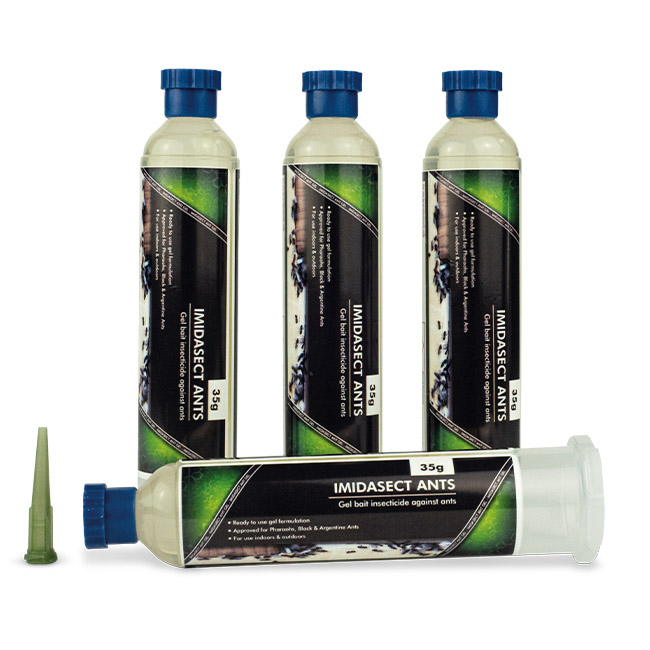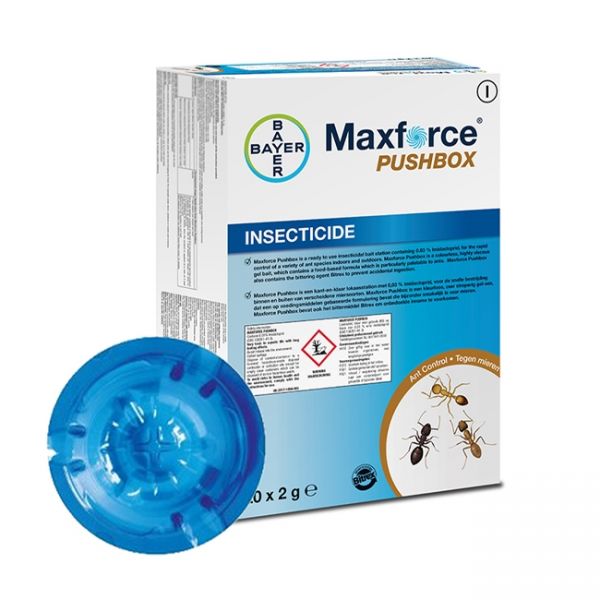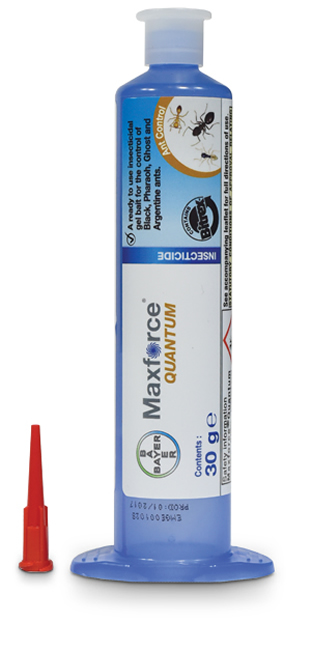Ivy Mining Bee (Colletes hederae)
Ivy Mining Bee (Colletes hederae)
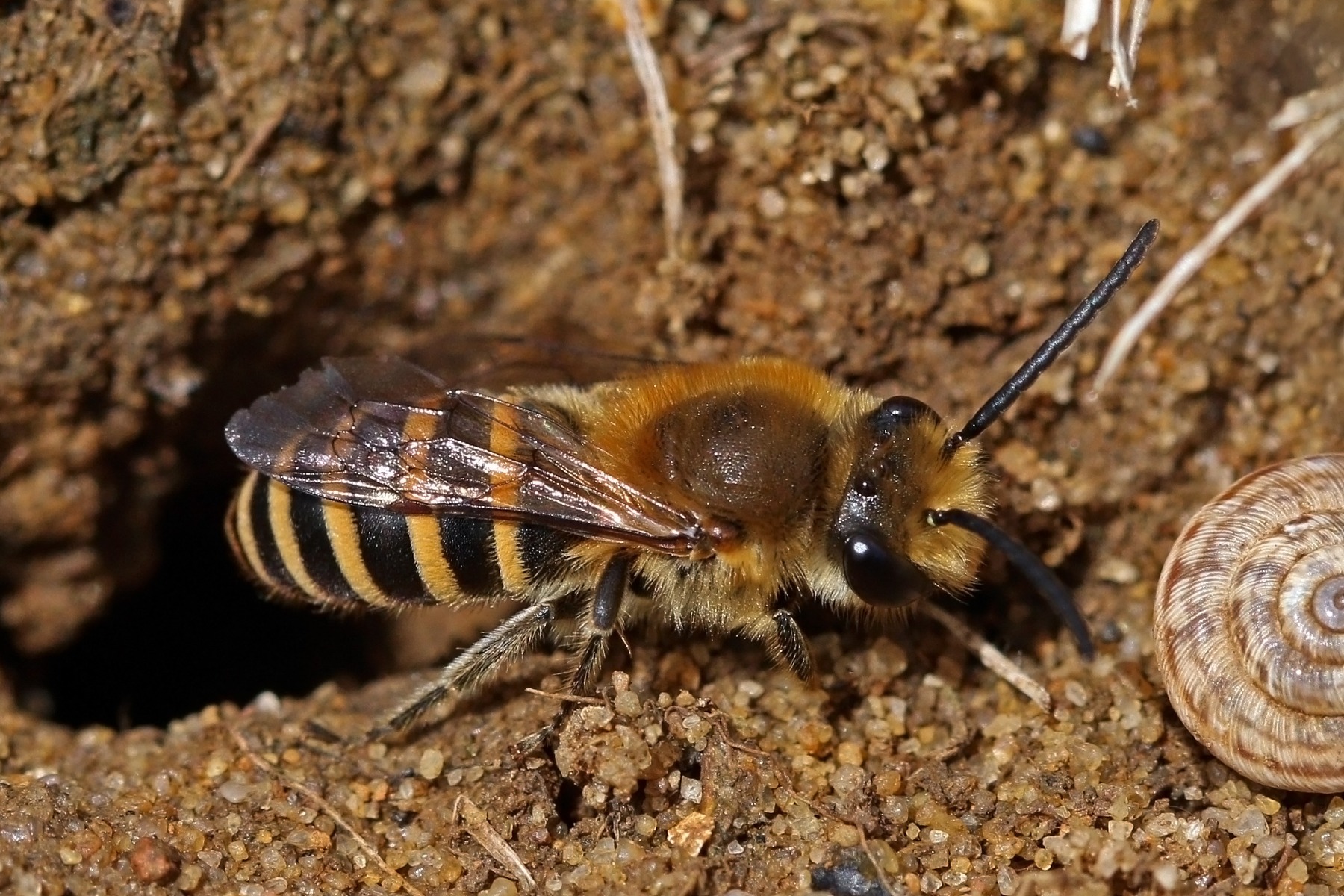 |
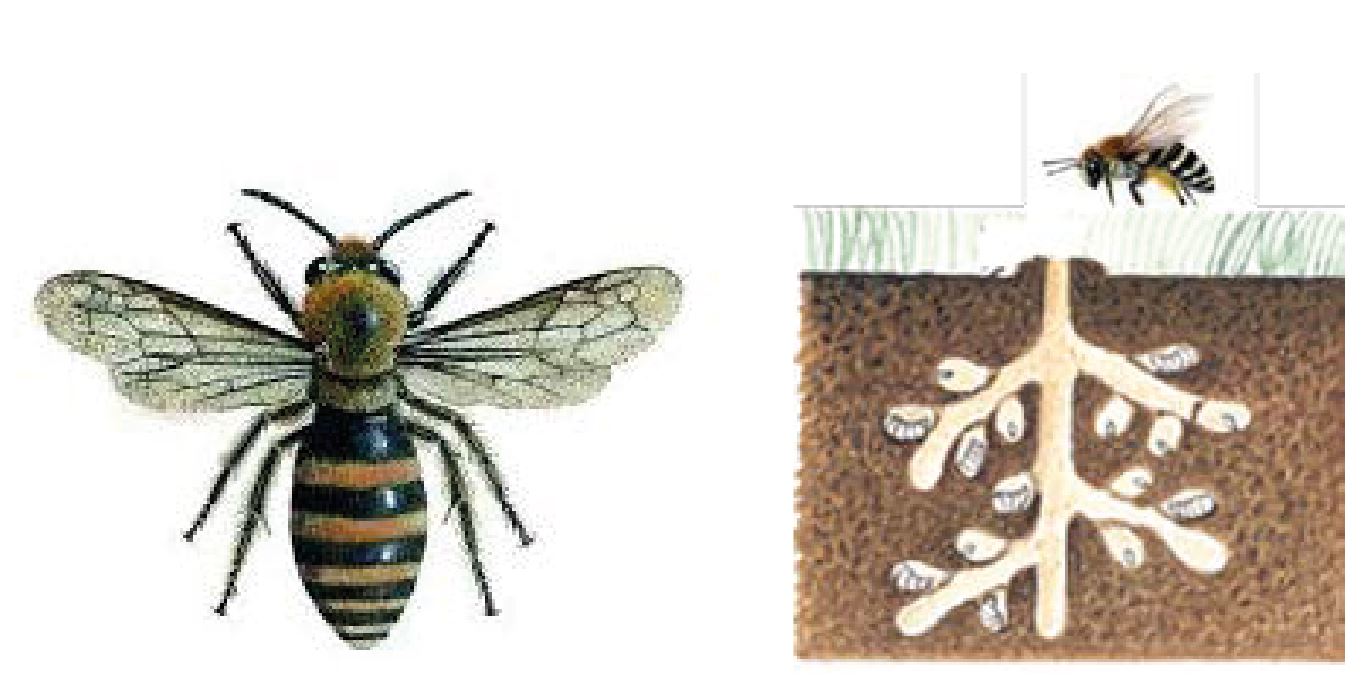 |
Identification:
Females 13 mmm in length, 10 mm in length. The thorax of the adults is covered by orangebrown hair, the abdomen is yellow/orange and black striped. Only active between September and November its primary food source is the pollen from ivy blossom - the last of the year's flowers.
Biology:
Male ivy bees emerge first in order to be ready for the first females. Unmated females are pounced on my several males all attempting to be the first to mate with her. Unlike honeybees or bumble bees the ivy bee is solitary - the female prepares a nest-hole on her own in which to lay her eggs which she will provision with ivy pollen.
Control:
Solitary bees are beneficial insects and do not sting. Furthermore, the spraying of insecticide is generally unsuccessful as: the bees are only found in sunny elevations and insecticides break down with UV light and the eggs etc are protected from the insecticide as they are sealed into their chambers. Mining bee activity can be discouraged by watering and raking over the ground where their holes are evident.
**Products to control Ivy Mining Bee:
|
Imidasect Ant Gel (35g tube) |
Maxforce Pushbox (20 x 2g) |
Maxforce Quantum Gel (30g tube) |

